Last year, as part of my role at OutSystems, I was tasked with building a product ops function from scratch. In this article, I’ll share the story of that first year, the steps we took, lessons learned, and the impact made. Our first year with product operations has been a Super Mario style power-up for the entire organization, and I’ll explain why.
For me, product operations has a lot in common with what we call power-ups in video games. I'm a huge video game fan and I'm always happy and surprised whenever I'm playing and the main character has the chance to acquire new skills or benefits.
In video games, we call these "power-ups." Suddenly you go from not being able to do something, to being able to do something increasingly better along the way.
In video games design, getting a power-up is a significant shift in the way you can play the game. For us at OutSystems this first year with product operations has been just like that, acquiring new powers.
The function empowered us to be much better than we were before. But before I continue, let me tell you a little bit about myself.
About me
Ever since I was a kid, I’ve really loved to help others; my friends, my family, my colleagues at school, and that has been a constant in my life. People would come to me for advice, and I would help them.
As I grew up, I found the truth is not always sweet and easy. I realized how hard it is to give good advice. It's really, really difficult. Over time, I also learned that only truth can unblock true growth.
Ever since then, I've been helping my teams to grow, to find solutions for their problems. The only difference I found between now and the beginning when I was young, is the challenges are a bit more complex nowadays.
In this article, I’ll be focusing on:
- Our journey to product ops
- The story of the first year
- Mind the setup phase
- Two lessons from the first year
- More focus areas
- Key takeaways
Our journey to product ops
It all started in March 2020
Everything started in March 2020. I remember I was already remote due to COVID and I was feeling anxious and apprehensive about the COVID situation. On the professional side, things were changing a lot too - we had a new VP of Product coming on, Goncalo, my new manager.
Goncalo is a dinosaur at the company. He has been at OutSystems for almost 15 years. He's famous for being a very demanding person with a strong focus on excellence and as you will see throughout this article, always full of new ideas.
I remember back then I was very tired from the last nine months and I was hoping to go on vacation. But on the contrary, he gave me a new challenge. I remember it like it was today. In one of our first one-to-ones he told me, "Anabela we have to improve the work of our team".
He's always full of energy when he speaks, imagine he has a Duracell battery that he charges every night, so that in the morning he is fresh, smiling, and always full of energy. He continued to talk and told me, "I want to improve the efficiency of the product group. What if we start a product operations area?"
What’s product ops?
Oh my god, I was like, "wow, starting a new area? Okay, it would be the third one for me in five years at OutSystems but I do like to start things from scratch. What is this product operations all about?"
But… why do we need product ops?
I started thinking it's probably something like sales ops or rev ops but for product. I was kind of intrigued. While I was slotting in these thoughts, I realized I needed to better understand the needs behind this. I asked Goncalo, "why exactly do we need the product operations area?", and he told me (again, very energetic):
"Anabela, OutSystems is in the hyper-growth stage, and to keep up with the necessary growth, we really need to improve our efficiency. You know the PM team is growing, we need to onboard much more PMs, we need to give time back to PMs so they can be focused on what really matters, their core competencies; the customers and the product. Not spending as much time in the office concerned with tools and processes. Also, it's really important that we have data and processes in place to support product strategic decisions".
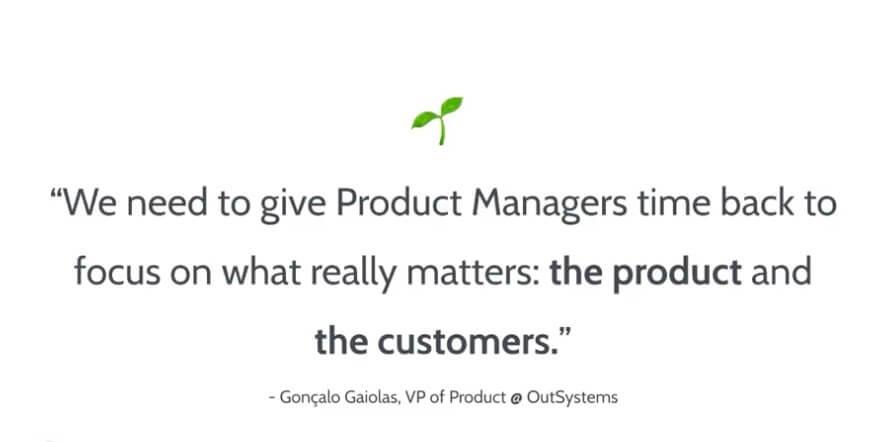
The problem with growth
Back then, we had a problem some of you might currently have as well. When you are growing, there are a lot of inefficiencies in the system because it's not managed, it's like un-chartered territory. Like any other company in this stage, we really needed to grow very fast.
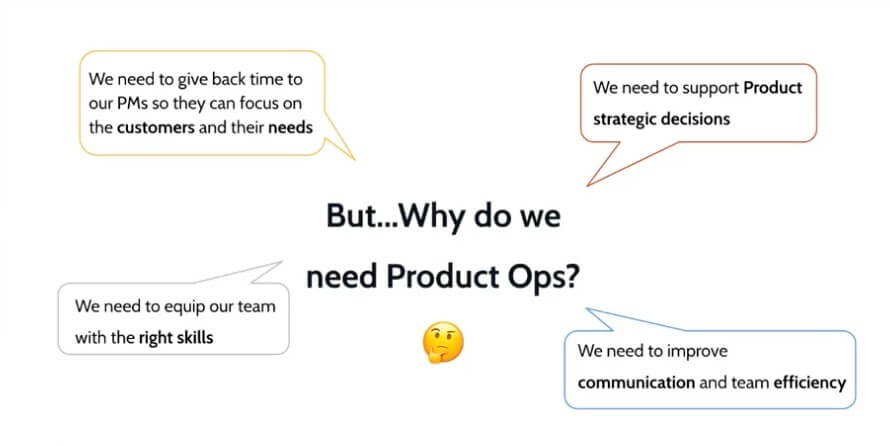
To be successful, we needed to improve the efficiency of our team. Just like that, I was challenged to step out of my comfort zone and walk in all of these unknown territories.
Product ops: a definition
So I started to understand the market and what this product operations is all about? I realized product ops was and still is a fairly new practice, and every company adapts it to specific needs.
The definition I like most is this one from Melissa Perry, where she puts product operations in the heart of the extended product group, as a vehicle of communication and as a source of insights and data to support strategic decisions.
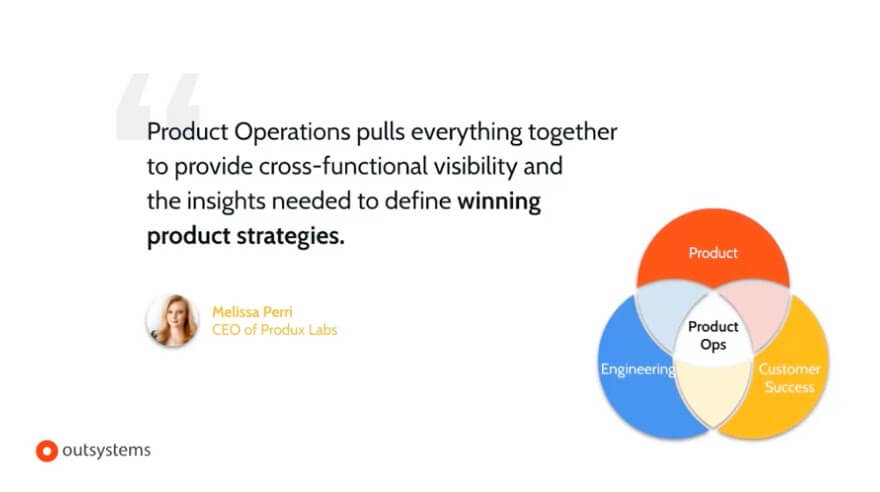
I understood the concept and started to adapt it to our reality.
At that moment, I felt as though I was starting a new adventure. I was excited with the opportunity of tailoring it to our needs, the OutSystems way.
After giving it some thought, I decided to say yes, and the adventure began...
The story of the first year
I was moving from a product management role to product ops and any PM reading will understand that naturally, I used my PM mindset.
First things first: know your customer
I decided to start by knowing my customer and his/her needs.
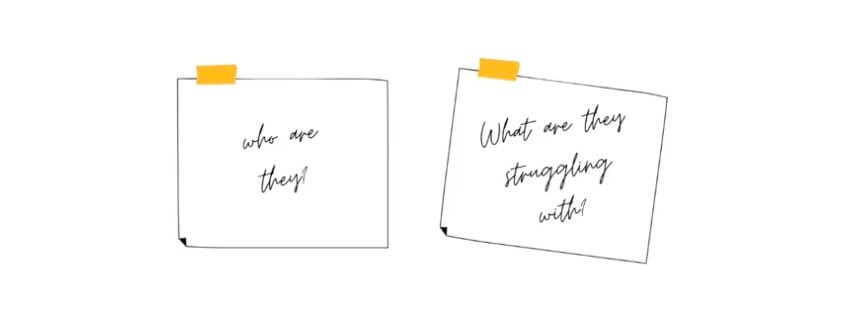
The discovery phase
For that, we started a discovery phase, as we do with our customers trying to find facts and fields. Suddenly, when when we looked around, I was in the same company but the scope changed a lot.
Map your customers
Suddenly, we have to interact with more than 20 groups of stakeholders; engineering, PM, legal, sales, solution architects, mainly 90% of the areas of the company.
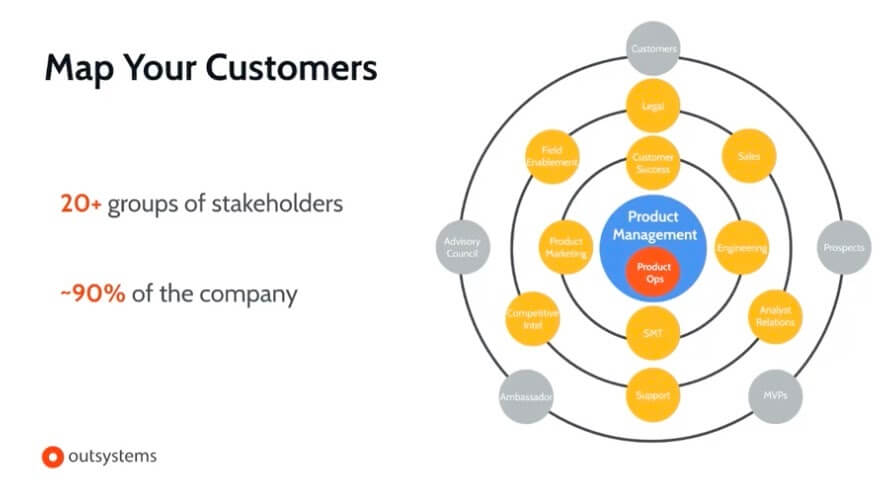
Okay, so let's understand their needs, we started the discovery phase.
Map out their pains
I remember that in one month, we interviewed 60 stakeholders, and we raised 76 main concerns. I must say some of the complaints were fair, things that really needed to be improved.

For instance, the stakeholders wanted to be more involved in the product roadmap prioritization. On the other way, for instance, we were in this hyper-growth stage, and the startup way of doing things was not working anymore for us.
At this stage, I realized the challenge was even bigger than I thought when I had my first talk with Goncalo. I must confess that at this time, I was a little bit concerned and afraid of not being able to address so many concerns.
Because I have a team of three people, just three, how could we address all of these concerns across the company? I needed to be creative.
A lesson from Steve Jobs
I remembered one thing I've learned from one of my heroes, Steve Jobs, the importance of just saying no.
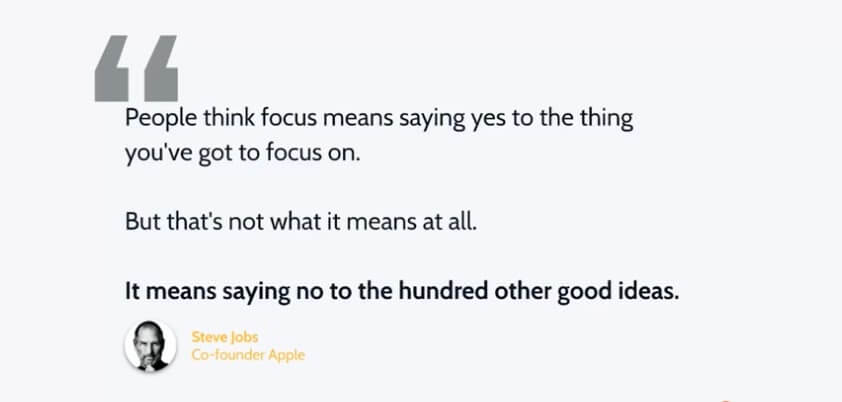
I thought, yes, Steve, I understand, this makes complete sense, it's really important to say no, but how to say no to such important stakeholders? We are talking about the CTO and CEO, for instance, and in a product-led company, they are the kings.
Prioritize for impact
After some thought, the solution for us was to create a prioritization model that would help us to be focused on what really moves the needle and as a way of aiming to have an impact across the organization.
As you can see, it's a very simple Excel spreadsheet that calculates the prioritization score based on four vectors; communication, frequency, team's impact, and the impact these concerns have on our product development lifecycle.
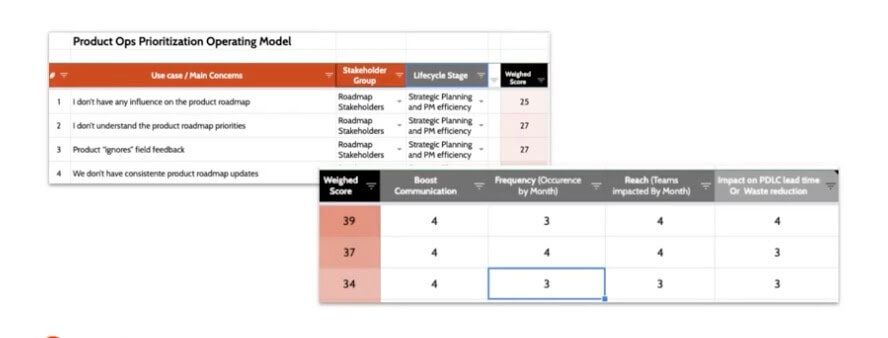
I can tell you this worked for us, for instance, even in negotiations, this model helped me a lot. Instead of saying a plain, "No", I was able to explain to stakeholders that to solve their specific problem, I needed to drop another one that has a huge impact on the company strategy.
It works 95% of the time. Even with Goncalo when he comes with new ideas (he's always coming in new ideas), I use this prioritization model and suddenly his idea was not that important anymore. It's easy to communicate even with my VP.
At this stage, I had a clear vision and the prioritization of the main problems. But now I had a different challenge - I needed to give my team direction and focus.
Definite a North Star metric
For that I used the North Star metrics technique, hoping it would keep us focused on what we were trying to achieve and help us measure success along the way. It's really important to be able to measure the success of what we are doing, and hopefully guide us during these dark nights that we will have to pass on this journey.
We have chosen, in our case, as our North Star zero lead time from problem framing to customer adoption. This North Star directed us to be more focused on improving the product development lifecycle.
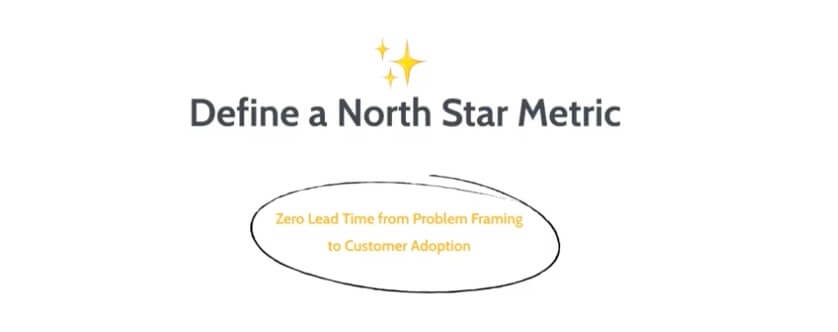
From the moment a PM talks with a customer, understands the problem, until the customers adopt the product, adopt the feature, optimizing the work of the PM team, engineering, marketing, and all the fields along the way.
Define clear focus areas
Also, I use a complementary technique to give my team's focus and direction; defining clear focus areas. The discovery insights combined with the top 10 concerns show us we should start by building the foundations of product operations.
Build the foundations
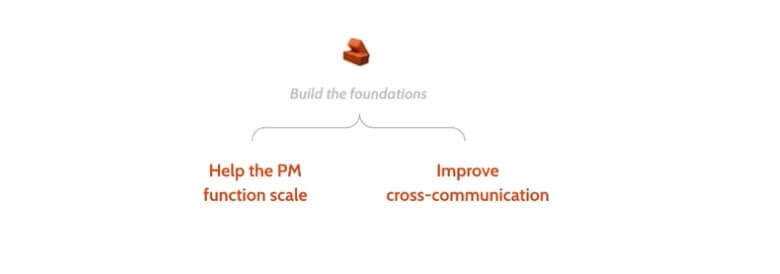
Help the PM function scale
In this, the first focus area for us was to help the PM team function scale. We needed to work with the PMs, inside the PM team, and in its collaboration with all the external product group stakeholders. At this stage in the beginning mainly with engineering and product marketing, improving the inefficiencies from the process.
Improve cross-communication
The second one for us was also clear, improving communication across the company with all stakeholders. We decided to start with the field teams because they felt more apart from PM.
Build a multidisciplinary team
Last but not least, I needed to have the right team, a Dream Team, hopefully, to deal with all of this complexity, with all of these demands, and so many different stakeholders, especially in this hyper-growth phase.
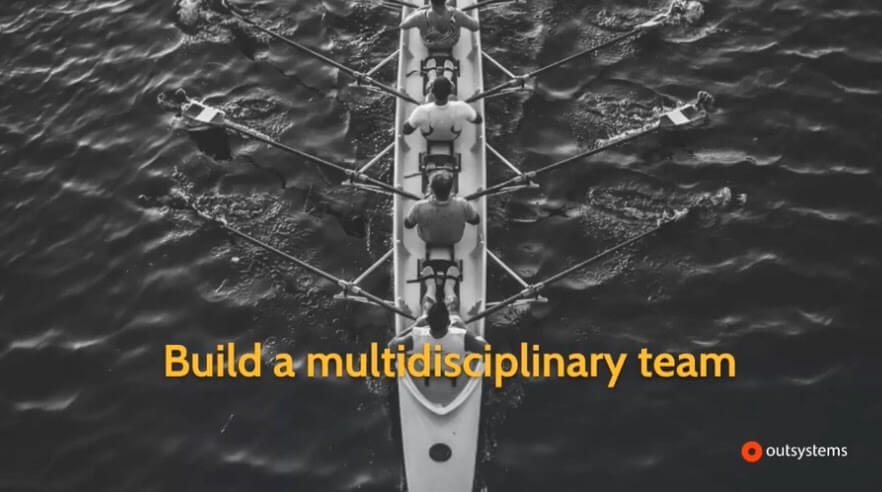
But that was not possible. Because product ops was a new practice there were no available resources in the market back then. I remember I started talking with myself, a little bit crazy, "Anabela, it's not the first time you've started everything from scratch, right? It's your third one, you know the drill, so you are capable of doing it one more time".
After some monologues between me and myself, I started the journey. We started as a team of three and tailored the OutSystems way of doing product tops.
Today, we've moved from three to nine and we are planning on growing more next year.
Mind the setup phase
Recapping, I would recommend you spend time in this first step. It's really, really, really crucial. At least for us at OutSystems, it was a setup for success.
Remember, understand your customer needs, focus on what will move the needle in your organization, and set up your team for success.
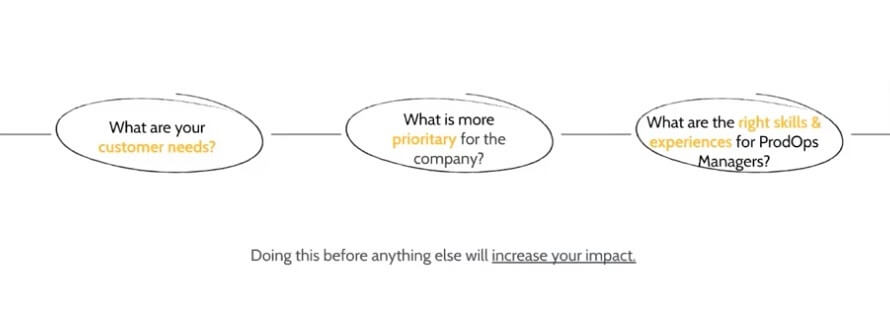
VP feedback
A funny fact is several months ago in a one on one with my manager, Goncalo asked me "Anabela do you know the Super Mario games?" I told him, "Yes, of course, who doesn't?"
We started talking about Super Mario and his powers and it was a bit odd for me because I had a huge list of topics I wanted to discuss and he was talking about video games. I like video games but at that moment, I had a huge list of priorities and topics to discuss with him.
But he continued, "Anabela, product ops reminds me of the Super Mario game. Do you know when Superman gets the flower, he gets superpowers? For me product ops is the product manager's flower, always giving us superpowers. And I feel that my flower is growing every month and it really helps me to do a better job and have more impact at the board level".
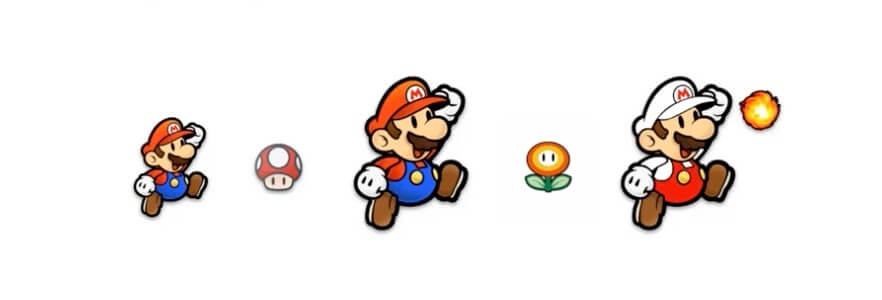
At that moment, I almost cried because I felt that all the lows and difficulties I had to overcome in the last months had been worth the effort, and finally, my team was really making an impact in our customer lives, especially in the life of our VP.
You must be thinking, why does Goncalo think we are the flower?
Two lessons from the first year
Let me tell you why and what I've learned from this experience by walking you through the two main lessons from the first year.
Lesson #1
The first one is about efficiency.
The problems
Tools
During the discovery phase, we realized PM efficiency was compromised by all the tools they had to use on a daily basis. For instance, when I was a PM, I had to use 10 different tools.
We used Salesforce to get information about customers, we used Radar, an internal customer-made tool made by OutSystems. We had an Excel spreadsheet to get feedback from customers and stakeholders. A lot of different tools.
Product feedback
Another important finding was product feedback was not centralized, and each PM had his own spreadsheet. This was strange for stakeholders because they talk with me, they talk with my colleague but then nothing happened or at least they thought nothing happened. They thought their concerns were not addressed.
Roadmap prioritization
Even the roadmap prioritization was done in a huge, huge, huge Excel spreadsheet. All the release and launch planning as well was in the same spreadsheet. This process was really very time-consuming and very error-prone.
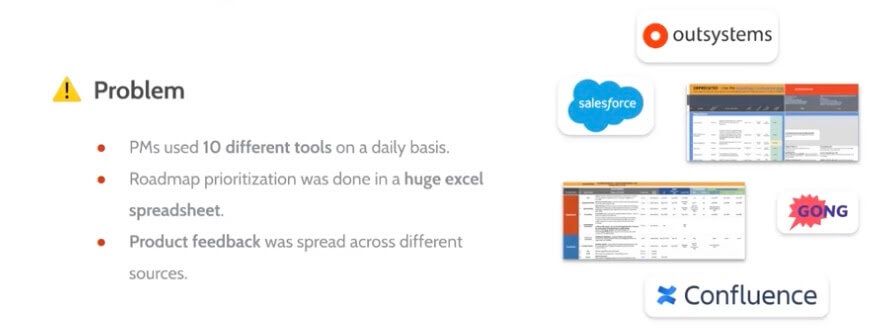
The solutions
Centralized product management tool
For us, the solution was to adopt the product management tool as a single source of truth. That allowed us to centralize product insights from all the stakeholders, the group of more than 20 you saw earlier, all of them.
The PM, also the customer, so we have all the information all the insights, and product feedback centralized.
A single source of truth
We can also in the same tool prioritize product initiatives, we can map the initiatives with the company strategy and the product strategy and prioritize aligned with that. Also, we can manage roadmaps there.
The big trick here is to standardize things that take time but have small value like processes, templates, tools, and so on. In this way, give PM time to be focused on what really matters.
This increased transparency a lot among teams and stakeholders. Stakeholders love it, now they can track their feedback, and understand what my priority is. They really feel that now they belong to the PM team. So it's working quite well.
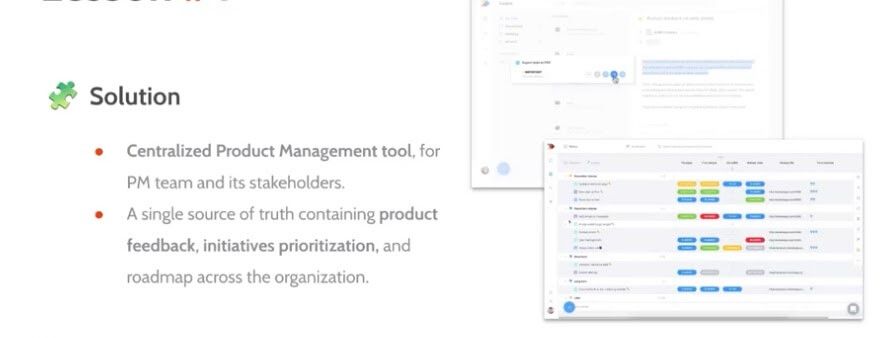
The impact
I can say that after six months, the impact of this was huge. Like Super Mario, we ate our mushroom and we had our first power-up. The PM team was amazed by the fact that due to this their productivity improved by 30% mainly because with this initiative, we address 60% of the main use cases in a centralized way.
I learned in this process that standardization is really a key to building a foundation for product excellence. Try to find the things you can standardize.
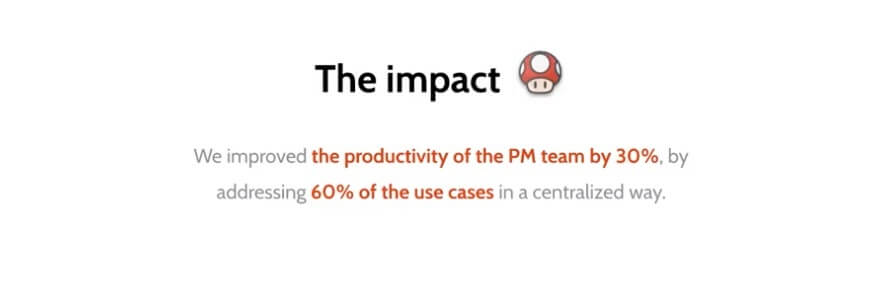
Lesson #2
The second lesson I have learned is related to communication. It also came from another insight from the discovery phase.
The problems
Stakeholder distance
The insight was we were not able to gather all the information and the relationship with field stakeholders was compromised during 2020. As I said they felt misunderstood, they don't relate with the product roadmap priorities, and so on.
Communication channels
Also, back then we had several communication channels and used different tools to communicate with stakeholders. All of these combined made access to product information messy and really complex.
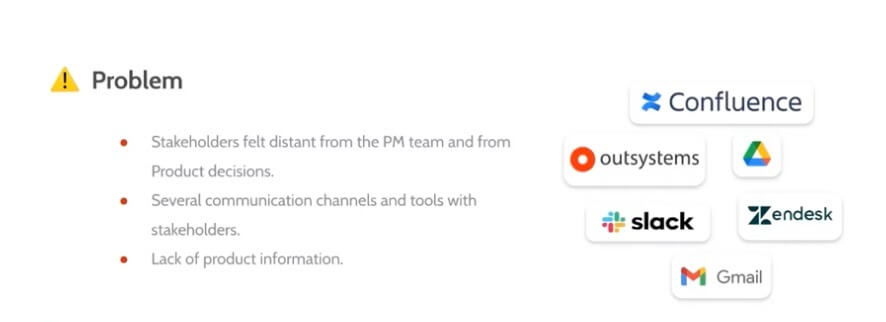
The solutions
Stakeholder engagement process
The solution for us was to define an end-to-end stakeholder engagement process. It was easy, again, keep it simple - it works all the time. We sat down with them and designed a just enough process to address the inbound and outbound issues they have and they filed with the product management team.
Communication cadence
In our case, the game-changing event was the communication cadence we put in place. You can think about communication cadence like the four seasons of the year. Your body knows what to expect from each season. For instance, in the winter, you need to use warmer clothes and eat much more energetic foods. While in the summer, everything is lighter; the clothes and the food and so on.
In business, it's also important to have this cadence and with this cadence comes a natural rhythm and predictability about what is expected from us.
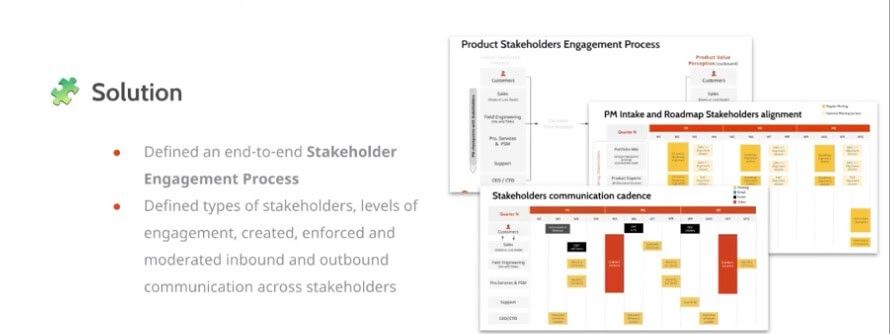
The impact
Again these new processes improved communication across the company a lot. The relationship that started very, very fragile ended up with customer satisfaction of 86% after this implementation.
By the end of Q4, we acquired a new power again. Now having all the stakeholders and especially the field teams recognizing and promoting our value.
Stakeholders felt heard and much, much, much, much, much more engaged with the opportunity to interact with PM and now they were discussing with us product topics, contributing to the roadmap strategy, and roadmap definition.
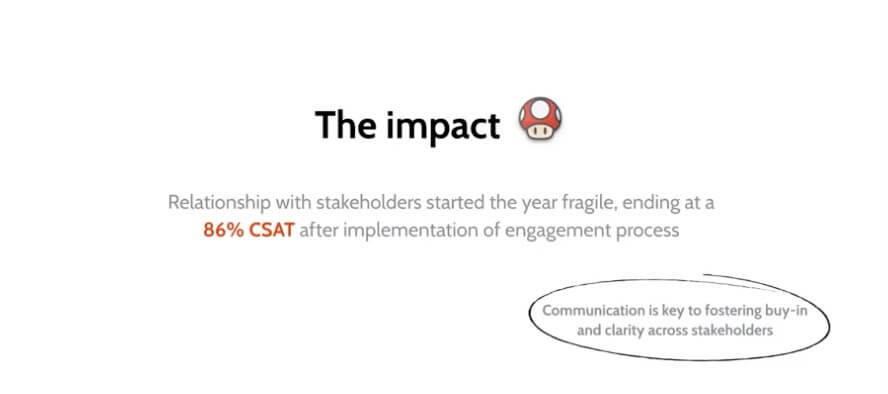
Like Super Mario in the game, we were also growing. Each quarter we feel we are growing and growing more and more and moving some levels up. By the end of 2020, we were stronger. Stakeholders recognized our value.
We were the VP's flower - whenever I think about it I'm thrilled with that. My team stood up to the challenge and we are now prepared to take everything to the next level.
More focus areas
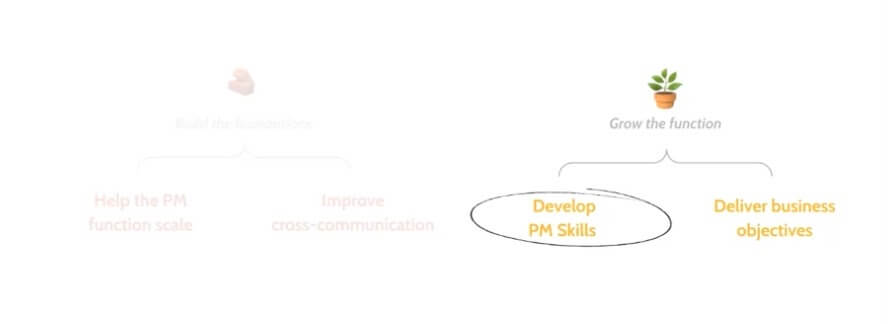
Developing PMM skills
After laying the foundations, our priority was no longer the PM team and the interplay with all the stakeholders, but developing PM skills. For that, we launched the B2B Product Management Academy, an in-house learning problem specifically designed for our product managers.
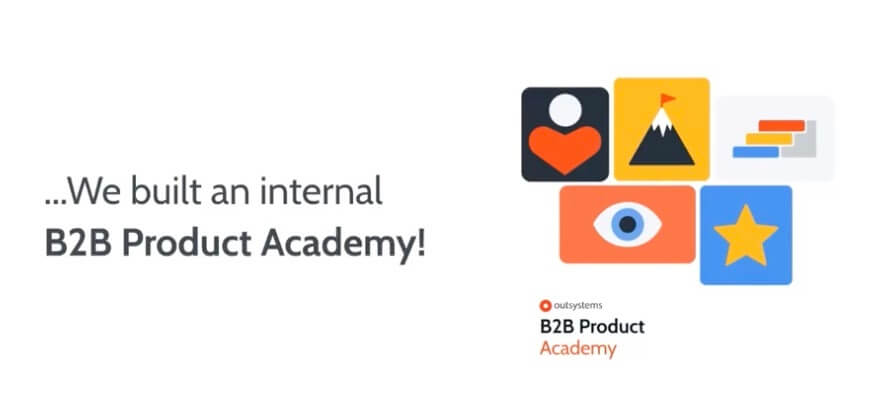
We're investing in creating an awesome learning experience to help them cope with the hyper-growth stage we're facing. I can share that we have been talking with some of the best product gurus in the market, for instance, Melissa Perry, Bruce McCarty, Marty Cagan.
The idea is they can come and help us and teach us how to be the next generation of product leaders.
Deliver business objectives
The fourth focus area is more related to developing business objectives and delivering business objectives. We're assisting the VP of Product on the product strategy definition, deployment, and monitoring.
So far, we have created the five steps framework to help us foster alignment across the company throughout the strategy. We are now in a proof of concept phase to see if it works and if it's really helped. I hope in a future article I can share more learnings from this phase.
Key takeaways
Meanwhile, there is one thing I would like you to take away from this article and it all comes down to impact - focusing on impact.
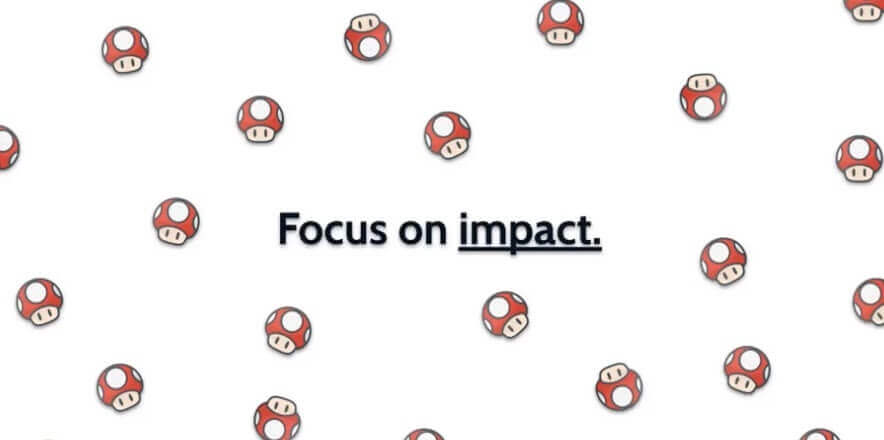
Focus yourself and your team on the things that really allow you to power up. In Super Mario games language, this means eating all the mushrooms - do it, eat all your mushrooms - grow and learn.
This will allow you to say no and to really contribute to solving the main challenges at your company level. You're not just working here, you are positioning yourself at the top level. Besides being an important thing, it's also very rewarding to see that you and your team can put a smile on your customer’s face. You get recognition from your customer.
It's also good whenever people recognize our value. Also what's really important is you motivate your team because they know their work really matters. On a personal level, it's been a great adventure.
It seems I'm in a Super Mario game, always growing, always passing new challenges. Even without knowing it when I was getting myself into this, now I see I've learned so much throughout this journey.
I couldn't have done it alone. I have my team and we're all are ready for the next adventure...
Thank you.



